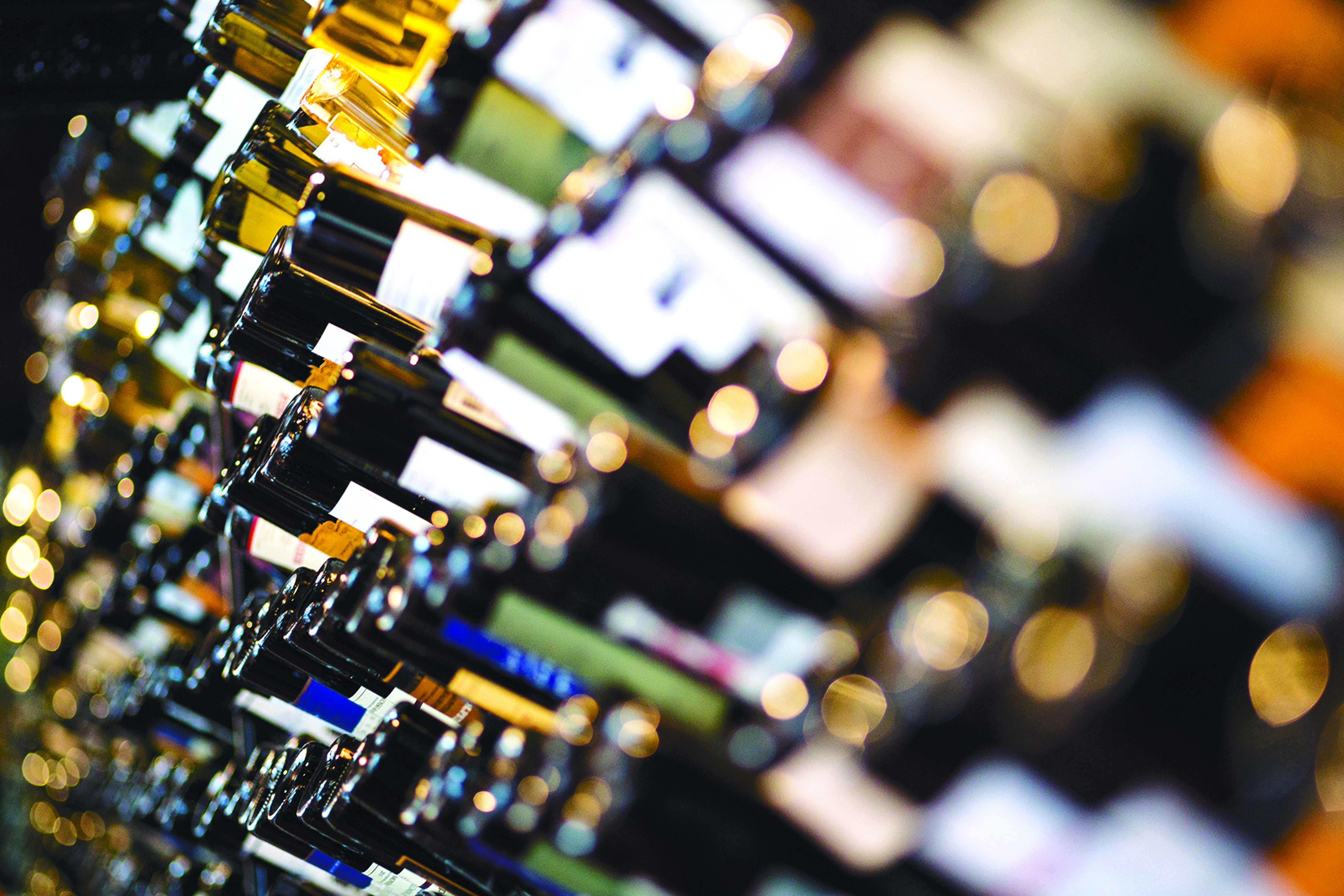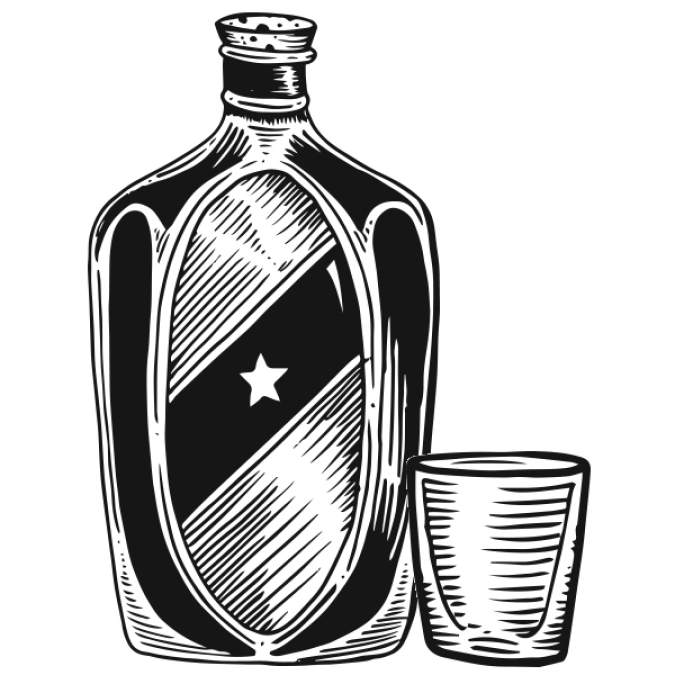As wine lists get increasingly more complicated—adding cask wines, more local wines, more obscure wineries, for instance—it can be difficult to figure out just what to order with dinner. To help your dining experience include that perfect glass or bottle, we’ve answered some of the tough questions. Armed with this information, the wine list is sure to be your friend.
Why are they pushing the “house” wine on me, and is it so cheap because it’s bad?You’ve all tried it: the house red that tastes more like slightly alcoholic water dyed red, or the white that would probably be just dandy if you put it on ice and added some soda water. It’s true that house wines and featured wines can sometimes be a dumping ground for otherwise unsellable back stock, or so cheap that even at $6 a glass the restaurant is making a killing. Yet there are times when perfectly good wine can in fact be cheaply had, and an alert drinker should be on the lookout.
Just like every other business, sometimes wineries or distributors have more inventory than they can move. For example, sometimes a given vintage just doesn’t sell, and to make room for the new one, the price is lowered; an otherwise well-known wine can be reduced 30 percent or more, bringing it into the glass-pour range. Similarly, some wineries like having their wines on glass-pour lists, figuring that it’ll drive more traffic over the long term (in short, it’s a form of advertising), so they offer that wine to select restaurants at a steep discount, as long as it’s poured by the glass. In any case, you should be able to taste before you order, so you can make up your own mind.What’s the deal with wine on tap, or “cask” wine?By now, tap or cask wine is getting to be a pretty common item on Seattle wine lists, from Loulay to Miller’s Guild to Palisade. Yet even as it becomes more ubiquitous, tap wine is still a source of confusion for many diners.
First and foremost, tap wine is no worse than bottled wine, and in fact can often be better. Unlike bottles, which have a limited shelf life after they’re opened, cask wine stays fresh for long periods. If you’ve ever gotten a glass of wine that looked great and tasted like nothing, you’ve encountered the dangers of the glass pour. Because there’s less waste, restaurants can also theoretically charge a slightly lower markup . . . though in all honesty, I’m not sure any do!
That said, tap wine is more an unexplored possibility than the next big thing. For now, only a few local wineries offer wine in kegs or casks, with Proletariat and Piccola the two biggest names. Most of these are relatively inexpensive and simple, since there’s always a bit of a challenge in convincing someone to order wine on tap. Charging $15 for a glass wouldn’t exactly help. One day, I’m sure, we’ll have a wide range of wines available on tap in Seattle, but we haven’t quite arrived there yet.Does it make sense to splurge on white wines?
I don’t know you, but one thing I’m sure of: You should drink more white wine. Oh, you might have a glass of a crisp white with oysters, or feel obligated to order a bottle of sauvignon blanc or chardonnay with halibut, but when it comes time to drop some money, it’s usually red. This is silly and self-defeating. Some of the world’s finest wines are white, and they’re excellent at the dinner table. Don’t just take my word for it. Ask someone much smarter: RN74’s wine director (and winemaker at WT Vintners), Jeff Lindsay-Thorsen. “A rich white can often be a better bridge to a variety of entrees, as opposed to a tannic or high-alcohol red that might overwhelm those who have seafood or a more subtle dish.” Yeah, what he said.
Plus you can often get exceptional whites for way less than a great bottle of red. There’s a whole undiscovered continent out there for you: chardonnay-based beauties from Burgundy; the complex and enticing rieslings of Germany; or stranger stuff like gruner veltliner from Austria or assyrtiko from Santorini. Don’t worry, those Napa cabs and Washington syrahs will still be there for your steaks and braised lamb, but when enjoying the incredible bounty of seafood we’re treated to here in Seattle, don’t be afraid to splurge on white.Photo by Kyu HanHow can I get the most bang for my buck when ordering wine?Everyone wants value when they order a bottle. Everyone’s definition is different, but I’m gonna call it getting more wine for your money. If absolute value is your goal, then you’re probably better off just buying wine at a store and opening it at home, but since you presumably want to eat out at least occasionally, let’s face facts: Restaurants mark up wine. Sometimes a lot.
The highest markups in terms of percentage are usually on the cheapest wines. That bottle that’s $45 on the list? There’s a good chance it costs $12 or so wholesale. The typical markup in most houses is in the realm of three times wholesale, so I’d call it good value when you get a wine for less than that. Specials can sometimes be a value, but there’s also a specific price range that can be good: just under $100. Restaurants know that three figures equals sticker shock for a lot of guests, so they’ll sometimes cut their markup a bit to get wines in just under that price. Granted, $90 doesn’t exactly seem like a bargain, but there are some pretty exceptional wines from all over the world that wholesale for $35–$40. If you can get one of those on a list for $90, you’re doing pretty well.
Another way to get bang for your buck is to avoid well-known wines. Brand names always cost more no matter what you’re buying; while sometimes those prices are well-earned, you’re still always paying at least a bit for a reputation. That goes for wineries, regions, and varietals. Instead of splurging on cabernet sauvignon or Chateauneuf-du-Pape, you can often get equally good or better results with tempranillo or Vacqueyras. Check the end of the story for more examples.I’m seeing more local wines on menus lately. Are they worth the money?
Supporting local businesses is a noble and admirable goal. Furthermore, lots of great wine is being made in the Pacific Northwest, so it’s not as if sticking to regional bottles will force you to drink plonk. Yet our wine industry is still quite young, and while that youthful vigor can be fun, sometimes it’s nice to see what a few hundred (or thousand) years of tradition can provide.
Jackson Rohrbaugh, Canlis’ assistant wine director, explains: “I never want to dissuade anyone from enjoying our great local wines, but there’s always something to be learned from the classic wine regions of Europe. After all, we’ve been making serious wines for about four decades, but many European regions and producers have centuries of practice. I often take the food-pairing angle. Great chablis is one of the best pairings for Washington oysters, as is manzanilla sherry or Champagne. Northwest salmon is great with Oregon pinot noir, but also is delicious with red Burgundy, Etna Rosso, or aged Rioja.”
Plus, even with importing fees and tariffs, foreign wine can often be a better value. There are many reasons for this, but one of the simplest is that most vineyards in Europe have been cultivated for generations, meaning that unlike here, no one is paying a mortgage on them. Forced to choose an inexpensive bottle of wine, I’ll almost always opt for an Old World one, because the odds are it’ll be decent at least.There seems to be a trend for restaurants to offer extensive dessert wine menus, but the choices can be overwhelming, and unfamiliar. How do I pick something good?
You don’t drink enough fortified wine. No, I’m not talking about Mad Dog 20/20. I’m talking about port, sherry, and the far more exotic “dessert” wines lurking on the wine list. Despite what you may think, they’re rarely all that sweet—or when they are, that sweetness is counterbalanced by exotic spices, bracing acidity, and a sheer depth of flavor that few dry wines can match.
While lots of local winemakers are experimenting with late-harvest wines, if you really want to explore the glory that is a truly great dessert wine, you have to go to the Old World: the trockenbeerenauslese of Germany, the vin doux naturel of France, or—Lindsay-Thorsen’s favorite—Tokaji Aszu from Hungary. “One of the world’s greatest sweet wines, it has the depth of Sauternes with a delicious orange-marmalade note.” They can be exceptional compliments to desserts or a treat unto themselves.
One note, though: Chocolate, especially dark chocolate, demands stronger stuff. I like to drink bourbon with mine, or even an aged rum or tequila. Don’t look at me like I’m crazy, just try it!I want to be more adventurous with my wine choices. Where do I begin?
One of the questions I’m asked most by friends and readers alike is how to go outside their comfort zone with wine. “I like to ask if they are looking for an adventure or something familiar,” Lindsay-Thorsen explains. “More often than not with a little context and a story about the winery, region, or grape, they are open to exploring something new.” I often think that more than the specific wine in a bottle, sommeliers and servers are selling a story, one that can be remembered and shared again with friends and family. Personal preference matters, but so does personal connection.
It’s good to think about how much risk you want to take. Are you at dinner with the in-laws? Maybe that’s not the right time to try that orange wine from Georgia (the country, not the state) that you read about. Similarly, if spending $80 on a bottle of wine you’ve never heard of causes palpitations, say that. Our job is to find the right bottle of wine for you at that exact moment, and circumstances beyond your personal tastes definitely weigh into that.
Affordable Substitutes for Expensive Wines
Illustration by Jose Trujillo
Wine can be costly. Usually, the wine you recognize on a restaurant list will be more than you want to spend. Fortunately, for every famous wine, there are a few lesser-known options almost as (if not equally) good, and much less expensive. Often the best approach is to ask your server or sommelier to recommend something like what you already drink, but different. You might well find a new favorite, and save a few bucks while you’re at it. In the meantime, allow us to help.
Let’s start with the big ones. If you like
Champagne, there are tons of wonderful sparkling wines made in almost the exact same style from other parts of the world. In France, look for cremants from Burgundy, Limoux, and the Loire. Spanish cava can be fantastic, especially at the Riserva and Gran Riserva level, and Italy’s Franciacorta is often compared favorably to Champagne as well.
If you like chardonnay, you’d do well to consider white Rioja, which is often also aged in oak and has a similar combination of richness and dryness. Another French varietal, semillon, can deliver richer citrus notes—and when combined with sauvignon blanc, as it often is in both Bordeaux and here in Washington, it delivers acidity as well.
If you like cabernet sauvignon, a red Rioja can be a dead ringer for it. For an even more exotic alternative, try Chilean carmenere, a close genetic relative that’s nearly extinct in France.
If you like syrah, consider another Rhone varietal, mourvedre, grown throughout the south of France as well as in its ancestral homeland of Spain (where it’s known as monastrell). Sometimes changing location, if not varietal, can work as well.
Instead of Chateauneuf-du-Pape, try the neighboring communities of Gigondas or Vacqueyras. Instead of Sancerre, consider Pouilly-Fume. Want a German riesling but don’t want to pay for the great wines of the Mosel Valley? Look for wines from the Nahe or Rheingau; here in Washington; or even Australia’s Margaret River.
Zach Geballe is a certified sommelier. Read his column, “The Bar Code,” every week in Seattle Weekly.
thebarcode@seattleweekly.com







